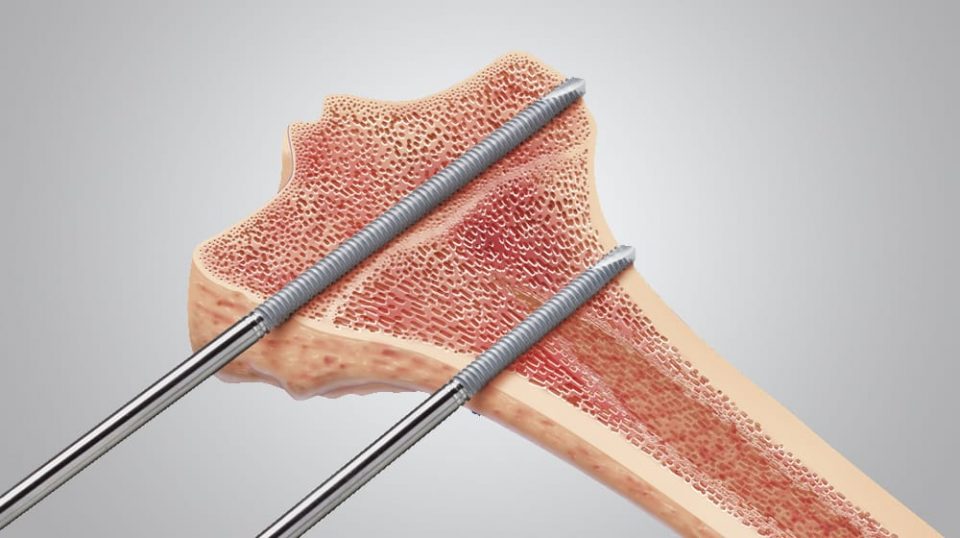Features & Benefits
Orthofix Bone Screws are intended to be used in association with Orthofix External Fixation Systems for long and small bone fixation. They are available in different thread designs, thread and shaft diameters and lengths, hydroxyapatite coated and uncoated in order to be applied according to the anatomical site (i.e. upper limb, lower limb, pelvis, hand, and foot), bone dimensions and quality, and soft tissue dimensions. They are available in stainless steel and titanium.
Orthofix Bone Screws are intended for professional use only. Surgeons who supervise the use of Orthofix Bone Screws must have full awareness of orthopedic fixation procedures as well as an understanding of bone screw surgical applications and post-operative management.
XCaliber Screws
Conical Bone Screws
The thread of these screws is self-tapping and has a conical shape in order to provide an increasing radial preload during insertion. This maintains good fixation at the entry cortex which is usually the first area subject to problems of loosening. Both self-drilling and non-self-drilling screws are available in sterile and non-sterile packaging. Shafts and threads are available in various diameters and lengths.
Cylindrical Bone Screws
The thread of these bone screws is cylindrical, self-drilling and self-tapping. These bone screws are available in different total lengths (including AO Connector of 25mm) and thread lengths, both in sterile and non-sterile packaging.
